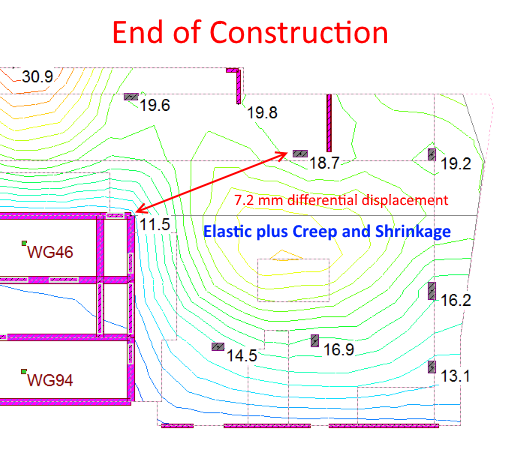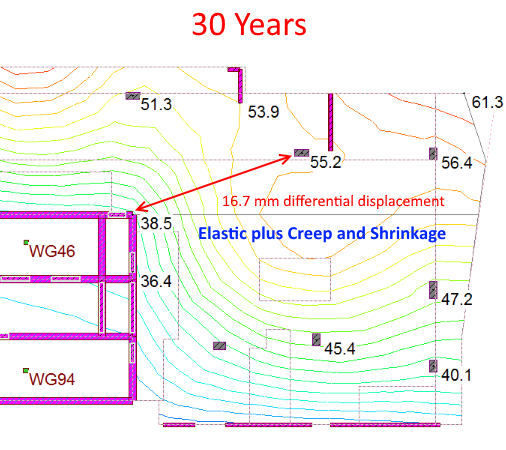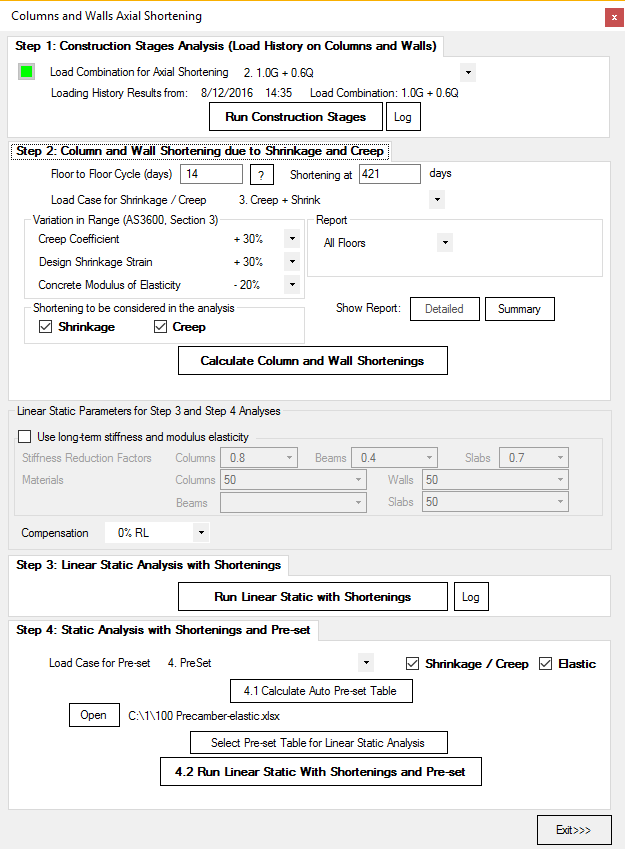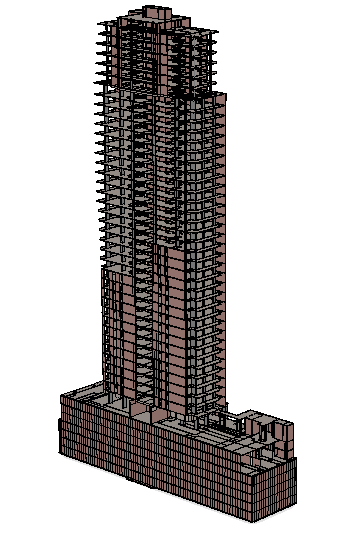Column & Wall Axial Shortening
RCB Software Module
RCB software provides a state-of-the-art, comprehensive analytical tool to calculate the axial shortening of columns and walls in multi-storey buildings, due to creep and shrinkage, while the building is constructed and at any time during the life-cycle of the building.
In medium and high-rise buildings the axial shortening of columns and walls due to creep, shrinkage and elastic shortening will have a significant effect on the distribution of the internal forces in the structural elements and on the final design. Unless differential settlement caused by axial shortening is considered, the internal forces in the structural elements may change over time to magnitudes they have not been designed for. Using the Age-Adjusted Modulus method, internal forces and displacements are calculated that take into account the construction cycle, time and duration of the applied load, exposure, restraint to creep and shrinkage from the reinforcement and surrounding structure, floor leveling due to construction compensation and any pre-setting of the columns and walls.


The images above show the differential settlement between the softer columns and stiffer shear core on the top floor of a building at the end of construction and at 30 years. All floors were built flat so there is very little differential settlement between the columns and the shear core at the end of construction. This differential settlement increases by a factor of 2.5 to about 17mm in 30 years which will cause the internal forces to redistribute. This increase in the differential settlement must be considered in the design.
The axial shortening module in RCB breaks down the non-linear problem of axial shortening into a simple, easy to use linear 4 step solution.

Step 1: Construction Stages Analysis (Load History on Columns and Walls)
Analyse the model floor-by-floor to get the load history per column and wall for a chosen service gravity load combination using the 28 day properties of concrete.
Step 2: Column and Wall Shortening due to Shrinkage and Creep
Unrestrained shrinkage shortening and creep shortening using the load history from Step 1 are calculated per column and wall. Time varying properties of concrete are considered.
Step 3: Linear Static Analysis with Shortenings
Apply the shortening values calculated in Step 2 to the structure and calculate the forces they generate and elastic shortening. If no pre-set is to be applied to the columns and walls (construct the columns higher so they settle flat at some point in the future) then all results can be viewed after this step.
Step 4: Static Analysis with Shortenings and Pre-set (optional)
If pre-set is to be applied to any columns or walls then Step 4 needs to be run. The software can calculate pre-set automatically to make the floors flat at some time in the future. User defined pre-set values can also be entered at this step.
Please contact INDUCTA for additional information about the Axial Shortening Module in RCB software.

Model Courtesy of M+G Consulting


